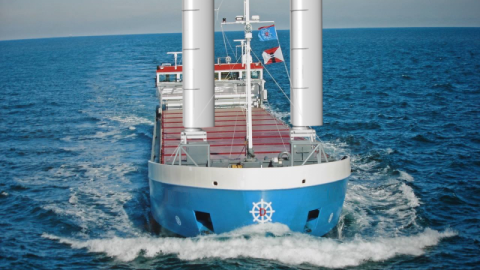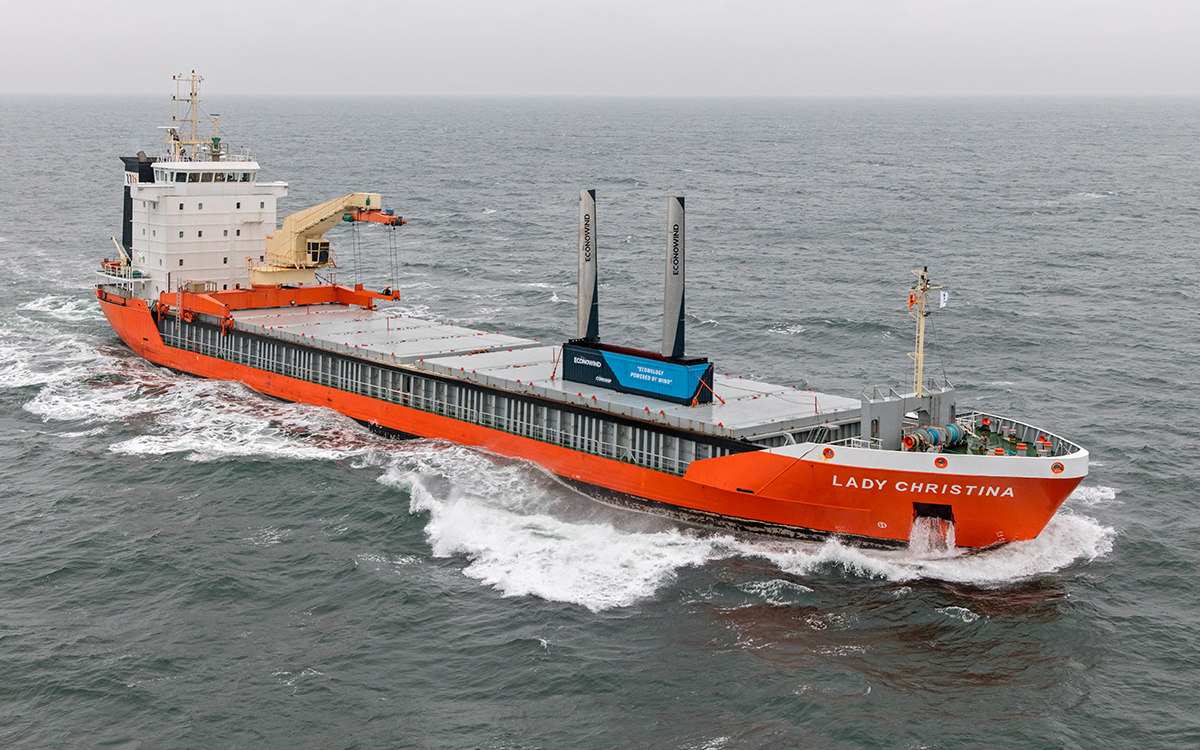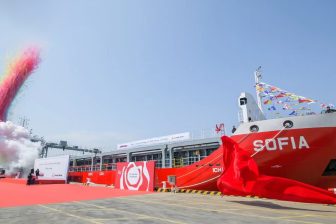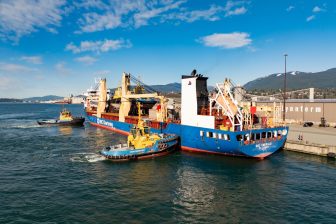
INTERVIEW: “We’ve realized fuel savings up to 800 litres a day”
Econowind has signed the first commercial contract to install its Ventifoil wind-assisted propulsion system aboard a 3,600 dwt general cargo vessel called Ankie. The expected fuel savings for this unit can reach a 1,000 litres per day, CEO Frank Nieuwenhuis tells PCJ.
The MV Ankie is owned by Jan van Dam Shipping, a Dutch family-owned company which operates eight small general cargo vessels in Northern Europe. In the fourth quarter of this year, the vessel will be retrofitted with two 10-metre Ventifoils which will be installed on the front of the ship. The expected fuel savings for the vessel should lead to a return of investment in approximately three years time.
Can you explain how the Ventifoils work?
“It’s basically a really thick aeroplane wing which creates forward motion when air flows around it. Too thick for aeroplanes, actually. The large thickness makes the wing efficient at low speeds, but to achieve this you’ll have to come up with a solution to make the airflow stick. Normally, a too-large wing angle would cause the airflow to disseminate. We have solved this by installing a fan inside the wing and making little holes in the wing’s surface. The fan pulls the wind through the holes creating boundary layer suction, pulling the wind around the wing to create a perfect airflow again. As a result, the Ventifoil is highly efficient even at low speeds.”
Looking at the fuel consumption, what kind of savings are we talking about?
“Obviously, this is dependant on the wind and the size of the vessel. Thus far in practice, the system saves 400 to 800 litres of fuel per day, but we believe the true potential lies around 1,000 litres. Depending on the size of the vessel that would translate into savings of 8 to 10%.”
For which types of vessels is this system suitable?
“For the 10-metre Ventifoils we are building at the moment, general cargo vessels ranging from 3,000 to 8,000 deadweight tons are ideal. Our aim is to create what we call Econology: good for the ecology, but economically viable as well. To achieve that, we first want to standardize our current units, but we will also be developing larger Ventifoils of 20 and 30 metres in the future.”
Jan van Dam’s vessel Ankie will be retrofitted with two Ventifoils which will be installed on the front of the ship. How does that impact the stability of the vessel?
“The effect on stability is actually very small. In comparison, ships like clippers used to have one big mast and sail while we place two much smaller sails next to each other. A handy side effect we discovered during sea trials, is that the Ventifoils allowed the test ship to sail at zero rudder angle when sailing half wind. This is because the Ventifoils compensated for the wind surface of the accommodation.”
Now that you’ve reached the milestone of selling your first commercial unit, what are the next steps for Econowind?
“We will be doing further practical testing together with Jan van Dam Shipping and other shipping companies, as part of a European subsidy program called Interreg. We are also working with five other shipping companies who are eager to try our Ventifoils. We have developed a containerized unit which can easily be moved and deployed on deck to make the system accessible to everyone who’s keen to try it.”
There have been a number of developments in wind-assisted propulsion systems over the last few years. Various shipowners have installed Flettner rotors and Louis Dreyfus and K-Line are experimenting with kite systems. However, in the discussion of zero-emission vessels, the main topics seem to be hydrogen, solar systems and optimized hull shapes. To what extent do you expect wind-assisted systems to power the world’s fleet?
“Wind-assisted propulsion systems are a piece of the puzzle, just like optimized hull designs and solar panels. Simply put, you want to solve as much as possible with renewable sources and use hydrogen only for what’s left. Hydrogen systems are complex and require a lot of energy. The less energy a ship needs, the better. Besides, hydrogen systems come with large fuel tanks meaning a decrease in cargo capacity.”

You just read one of our premium articles free of charge
Register now to keep reading premium articles.




